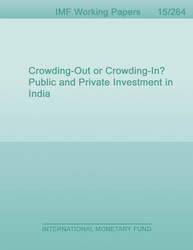
Crowding-Out or Crowding-In? Public and Private Investment in India
This paper contributes to the debate on the relationship between public-capital accumulation and private investment in India along the following dimensions. First, acknowledging major structural changes that the Indian economy has undergone in the past three decades, we study whether public investment in recent years has become more or less complementary to private investment in comparison to the period before 1980. Second, we construct a novel data-set of quarterly aggregate public and private investment in India over the period 1996Q2-2015Q1 using investment-project data from the CapEx-CMIE database. Third, embedding a theory-driven long-run relationship on the model, we estimate a range of Structural Vector Error Correction Models (SVECMs) to re-examine the public and private investment relationship in India. Identification is achieved by decomposing shocks into those with transitory and permanent effects. Our results suggest that while public-capital accumulation crowds out private investment in India over 1950-2012, the opposite is true when we restrict the sample post 1980 or conduct a quarterly analysis since 1996Q2. This change can most likely be attributed to the policy reforms which started during early 1980s and gained momentum after the 1991 crises.
Publication date: December 2015
ISBN: 9781513541655
$18.00
Add to Cart by clicking price of the language and format you'd like to purchase
Available Languages and Formats
| English |
Prices in red indicate formats that are not yet available but are forthcoming.
Topics covered in this book
This title contains information about the following subjects.
Click on a subject if you would like to see other titles with the same subjects.
Investments and Securities-General , Public investment , Private investment , Crowding in , Crowding out , Permanent shocks , Structural identification , Vector error correction models , investment , capital , investment activity , General , Time-Series Models , Infrastructures
Summary
Copyright © 2010 - 2024
Powered by:
AIDC



